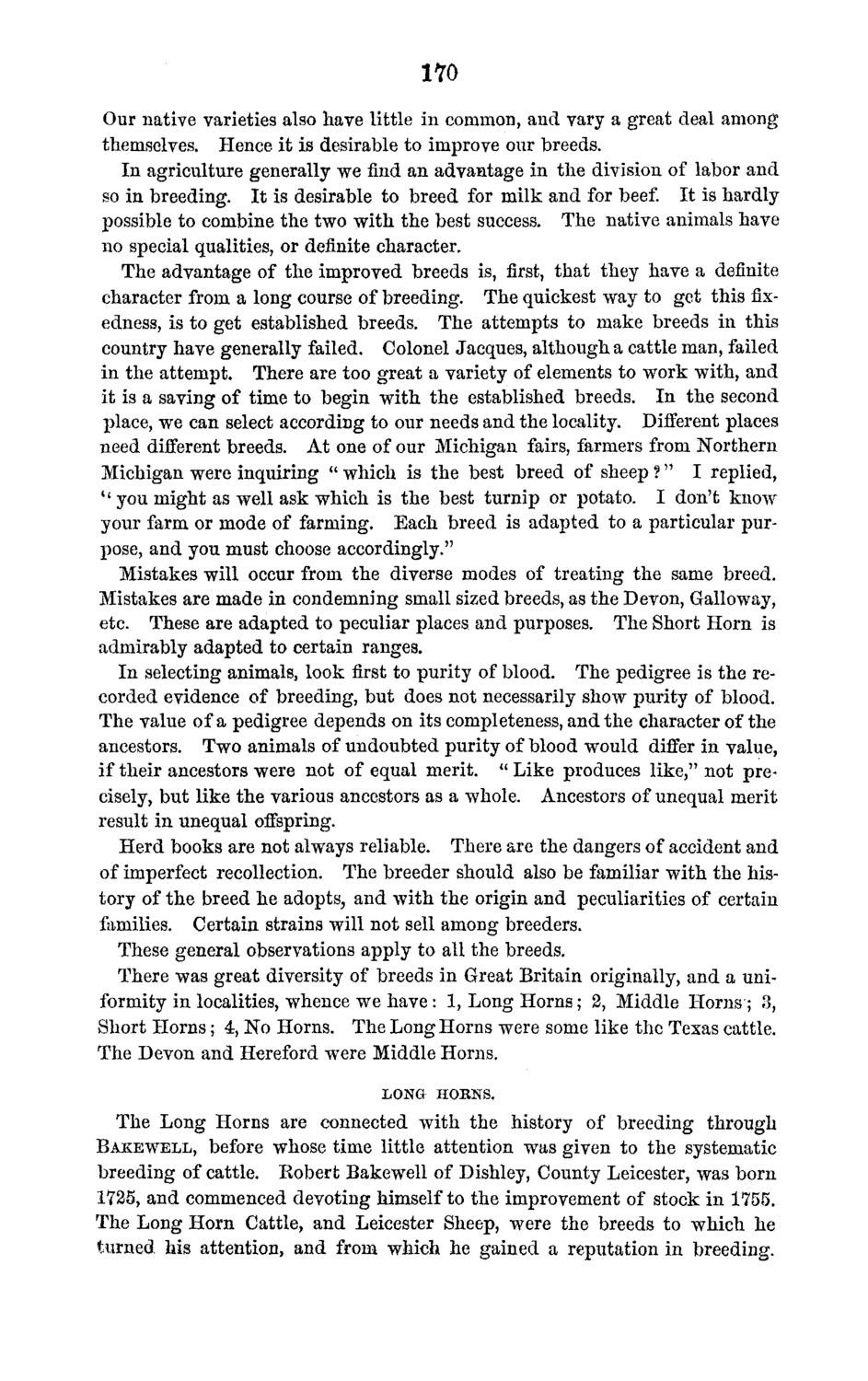| |
| |
Caption: Board of Trustees Minutes - 1870
This is a reduced-resolution page image for fast online browsing.

EXTRACTED TEXT FROM PAGE:
170 Our native varieties also have little in common, and vary a great deal among themselves. Hence it is desirable to improve our breeds. In agriculture generally we find an advantage in the division of labor and so in breeding. It is desirable to breed for milk and for beef. It is hardly possible to combine the two with the best success. The native animals have no special qualities, or definite character. The advantage of the improved breeds is, first, that they have a definite character from a long course of breeding. The quickest way to get this fixedness, is to get established breeds. The attempts to make breeds in this country have generally failed. Colonel Jacques, although a cattle man, failed in the attempt. There are too great a variety of elements to work with, and it is a saving of time to begin with the established breeds. In the second place, we can select according to our needs and the locality. Different places need different breeds. At one of our Michigan fairs, farmers from Northern Michigan were inquiring " which is the best breed of sheep ?" I replied, " you might as well ask which is the best turnip or potato. I don't know your farm or mode of farming. Each breed is adapted to a particular purpose, and you must choose accordingly." Mistakes will occur from the diverse modes of treating the same breed. Mistakes are made in condemning small sized breeds, as the Devon, Galloway, etc. These are adapted to peculiar places and purposes. The Short Horn is admirably adapted to certain ranges. In selecting animals, look first to purity of blood. The pedigree is the recorded evidence of breeding, but does not necessarily show purity of blood. The value of a pedigree depends on its completeness, and the character of the ancestors. Two animals of undoubted purity of blood would differ in value, if their ancestors were not of equal merit. " Like produces like," not precisely, but like the various ancestors as a whole. Ancestors of unequal merit result in unequal offspring. Herd books are not always reliable. There are the dangers of accident and of imperfect recollection. The breeder should also be familiar with the history of the breed he adopts, and with the origin and peculiarities of certain families. Certain strains will not sell among breeders. These general observations apply to all the breeds. There was great diversity of breeds in Great Britain originally, and a uniformity in localities, whence we have: 1, Long Horns; 2, Middle Horns; 3, Short Horns; 4, No Horns. The Long Horns were some like the Texas cattle. The Devon and Hereford were Middle Horns. LONG HORNS. The Long Horns are connected with the history of breeding through BAKEWELL, before whose time little attention was given to the systematic breeding of cattle. Robert Bakewell of Dishley, County Leicester, was born 1725, and commenced devoting himself to the improvement of stock in 1755. The Long Horn Cattle, and Leicester Sheep, were the breeds to which he turned his attention, and from which he gained a reputation in breeding.
| |